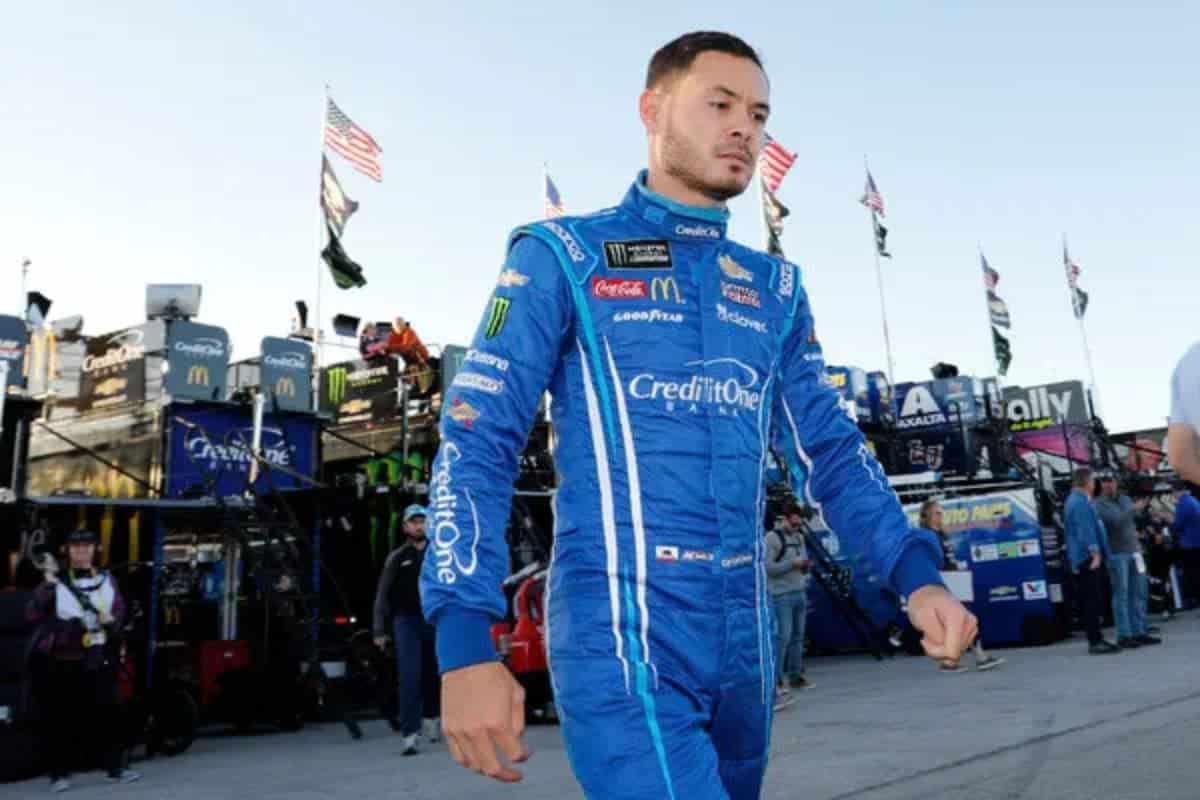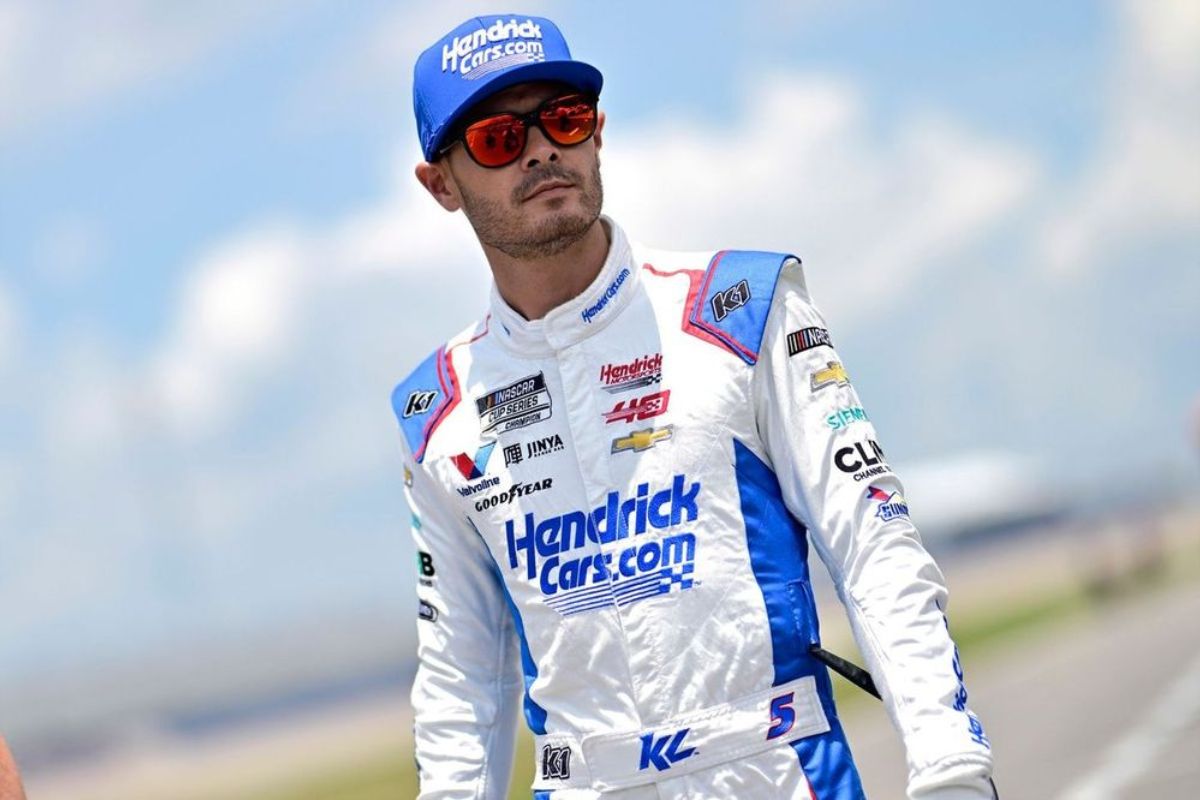Kyle Larson Impressive Stat: Kyle Larson‘s recent triumph at the Brickyard 400 highlights his formidable skill set and presents a fascinating juxtaposition with the steady composure exhibited by a driver during the race. Larson’s impressive statistics serve as a reflection of his dominance in NASCAR, while the calm demeanor of his competitor raises intriguing questions about the mental dynamics at play in such environments. This interplay between raw talent and mental fortitude invites a deeper exploration of how such contrasting approaches can shape racing outcomes and influence the sport’s evolving narrative. What does this mean for the future of NASCAR?
Key Highlights
- Kyle Larson has showcased remarkable racing skills, achieving consistent top finishes and victories, solidifying his status as a NASCAR frontrunner.
- His recent win at the Brickyard 400 demonstrated his composure and tactical decision-making amidst high-pressure situations and fierce competition.
- Heart rate data from Larson reveals his ability to manage adrenaline effectively, peaking at 180 bpm during critical race moments.
- The calm demeanor of the driver exemplifies resilience, aiding in strategic decision-making and enhancing performance outcomes during challenging races.
Kyle Larson’s Brickyard 400 Victory
Kyle Larson’s victory at the Brickyard 400 stands as a tribute to his exceptional composure and skill under pressure, illustrating the qualities that have defined his remarkable season in NASCAR. This prestigious event, steeped in history and tradition, posed considerable challenges that demanded not only technical expertise but also mental fortitude.
As Larson navigated through the chaos of multi-car pile-ups and a nail-biting fuel shortage, his ability to maintain focus and tactical decision-making became paramount. The race unfolded as a high-stakes thriller, with Larson facing off against formidable competition, particularly the relentless Ryan Blaney.
The tension was palpable, yet Larson’s demeanor remained remarkably steady throughout the contest. His adeptness at balancing aggression with calculated risk allowed him to capitalize on opportunities while mitigating potential setbacks.
Moreover, Larson’s controlled heart rate during the race, as evidenced by the data he later shared, emphasizes his psychological resilience. In a sport where adrenaline can lead to impulsive decisions, Larson’s composed approach appears to be a cornerstone of his success.
His ability to perform under pressure not only secured him the checkered flag but also amplified his status as a top contender in NASCAR. Ultimately, Larson’s triumph at the Brickyard 400 is more than just a victory; it serves as a reflection of his steadfast commitment, tactical insight, and the mental clarity required to excel in one of motorsport’s most demanding arenas.
Heart Rate Data from Larson’s Sprint Car Race
In a thrilling display of skill and resilience, Larson’s recent sprint car race showed not only his competitive spirit but also remarkable physiological data that highlights the intense demands of motorsport. Competing in the World of Outlaws race at Federated Auto Parts Raceway, Larson started from the 21st position and secured victory by a mere 0.053 seconds, a proof of both his driving expertise and mental fortitude.
The heart rate data collected during this electrifying contest reveals the physical strain experienced by elite drivers. Larson’s maximum heart rate peaked at an 198 beats per minute, while his average rate remained raised at 150 bpm throughout the event. These figures shows the cardiovascular demands placed on drivers, particularly in a race characterized by aggressive maneuvers and tactical overtaking.
Larson’s candid reflection on social media, where he attributed his new maximum heart rate to a diet of ‘pasta, wine, and tequila,’ adds a layer of humor to the rigorous nature of competitive racing. This interplay of physicality and mental resilience demonstrates the complexities of motorsport, where drivers must maintain peak performance amid fluctuating heart rates and adrenaline surges.
As bad as we’ve been this year my thoughts before the feature were, “don’t get lapped”.
Never give up kids!
New max HR for me as well 😂
I blame that on all the pasta, wine, and tequila in Italy. https://t.co/KKR424tfTj pic.twitter.com/c97VrYwufP
— Kyle Larson (@KyleLarsonRacin) August 3, 2024
Calmness During the Brickyard 400
Amidst the tension of the Brickyard 400, Larson exhibited an exceptional ability to maintain composure, a trait that distinguishes elite racers in the fiercely competitive world of NASCAR. As the race approached its climax, a multi-car crash introduced a caution with only three laps remaining, heightening the pressure on all drivers.
In a bold tactical move, Keselowski opted not to pit, securing a front-row position for the restart. However, his gamble unraveled when he ran out of fuel before the green flag waved, inadvertently placing Larson in a prime position to capitalize on the ensuing chaos.
What sets Larson apart is not merely his driving skill but his psychological fortitude. In the moments leading to the restart, he displayed a remarkable level of calm, even surpassing his demeanor during sprint car races. This ability to regulate his emotions was evident as he navigated the high-octane environment, ultimately surging past Blaney to seize the lead.
Brickyard 400 https://t.co/CNwWlizhub pic.twitter.com/6gmZNCL89K
— Kyle Larson (@KyleLarsonRacin) August 3, 2024
Larson’s heart rate data further elucidates his composed nature; while his average beats per minute (bpm) was recorded at 120, it spiked to 180 during the critical restart. This peak reflects the adrenaline of racing but also highlights his capacity to harness that energy effectively.
Historical Context of Heart Rate Monitors in NASCAR
The introduction of heart rate monitors in NASCAR marked a notable evolution in the sport’s approach to understanding driver performance and physiological responses during races. By integrating this technology, NASCAR aimed to gain insights into the intense physical and mental demands placed on drivers, ultimately enhancing safety and performance strategies. The official adoption of heart rate monitors in 2017, following discussions with the driver’s council, signified a commitment to leveraging data for competitive advantage.
- Driver Safety: Monitoring heart rates allows teams to assess the physical toll of racing, thereby implementing measures to protect drivers from potential health risks.
- Performance Analytics: Heart rate data provides teams with valuable information on driver stress levels and endurance, enabling them to tailor training regimens and race strategies.
- Mixed Reception: Some drivers, like Clint Bowyer, expressed skepticism, questioning the practical benefits of wearing such devices during competition. This highlights a divide in how technology is accepted within the sport.
“The last time I checked, nobody has ever paid me to wear a heart monitor or to do anything other than finish these races up front and hopefully win them.” – Bowyer
As NASCAR continues to evolve, the integration of heart rate monitors symbolizes the growing intersection of technology and athletics. While the initial reactions have been mixed, the potential for improved safety and performance metrics could set a precedent for future innovations in the sport, fostering an environment where both driver well-being and competitive edge are prioritized.
Reactions and Opinions on Heart Rate Monitors
Reactions to the implementation of heart rate monitors in NASCAR reveal a spectrum of perspectives, highlighting both enthusiasm for technological advancement and skepticism about its practical benefits in racing.
Significantly, drivers like Joey Logano have adopted these devices, appreciating the real-time data that demonstrates physiological responses during races. Logano’s observation that his heart rate peaks at the race’s finish emphasizes the monitor’s potential to improve self-awareness and performance optimization. By tracking heart rate fluctuations, drivers can better manage stress and anxiety, which is imperative in a sport characterized by extreme pressure.
“My heart rate is working in there. My heart rate doesn’t slow down. I’m antsy in general. I’m too wired. It’s cool to see your heart rate, in particular restart, and then in the long run it comes down a bit. The elevation is usually 10 beats at the end of the race. My peak heart rate is at the end of the race, consistently.” – Logano
Conversely, Kyle Busch adopts a more neutral stance, viewing heart rate monitors as supplementary tools rather than fundamental components of racing strategy. His belief in the primacy of physical fitness and breathing techniques suggests a preference for traditional methods of stress management over reliance on technology. This perspective raises significant questions about the broader implications of integrating technology into the sport.
While heart rate monitors may provide valuable insights, they also necessitate a cultural shift among drivers and teams towards accepting data-driven decision-making. The ongoing discourse around these devices highlights a crucial intersection of technology, performance, and psychological resilience in NASCAR.
News in Brief: Kyle Larson Impressive Stat
Kyle Larson’s recent triumph at the Brickyard 400 exemplifies the intricate interplay between skill and psychological resilience in NASCAR.
The contrasting composure exhibited by the American-Japanese driver further highlights the necessity of mental fortitude in high-stakes racing environments.
As heart rate monitors become more prevalent, understanding their impact on performance may provide deeper insights into the physiological responses of drivers, ultimately shaping strategies for success in the sport.
ALSO READ: Kyle Larson Hilarious Take on Italy Trip Mishaps Leaves NASCAR Fans in Splits



